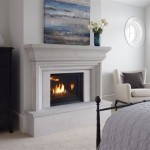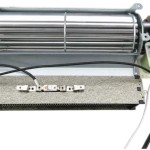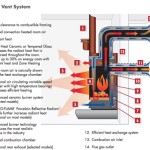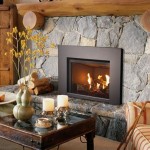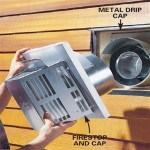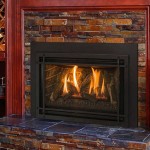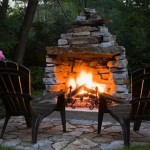Fireplace Clearance Requirements: Ensuring Safety and Compliance
Fireplaces are a cherished feature in many homes, providing warmth, ambiance, and a focal point for gatherings. However, the enjoyment of a fireplace comes with the responsibility of ensuring safety. One crucial aspect of fireplace safety is adhering to clearance requirements, which specify the minimum distances between the fireplace and surrounding combustible materials. These requirements are designed to prevent fires and protect both property and lives.
Understanding and complying with fireplace clearance requirements is essential for homeowners, builders, and anyone involved in fireplace installation or renovation. Failing to meet these standards can lead to serious consequences, including:
- Fire hazards: Insufficient clearance can allow heat from the fireplace to ignite nearby combustible materials, leading to a fire.
- Property damage: A fire can cause extensive damage to the structure of a home, furniture, and belongings.
- Injury or fatality: Fire-related accidents can result in serious injuries or even fatalities.
- Insurance issues: Insurance companies may refuse to cover damage caused by a fire if the fireplace was not installed in accordance with clearance requirements.
Clearance Requirements: A Comprehensive Guide
Fireplace clearance requirements are determined by various factors, including:
- Type of fireplace: The type of fireplace (e.g., wood-burning, gas, or electric) will influence the required clearance distances.
- Firebox material: The material used for the fireplace's firebox (e.g., brick, metal, or concrete) impacts heat transfer and clearance requirements.
- Surrounding materials: The type of materials surrounding the fireplace, such as wood, drywall, or insulation, will affect how easily heat can transmit and ignite them.
- Local building codes: Local building codes often specify minimum clearance distances for fireplaces. It's crucial to consult with the local building department to ensure compliance.
- Manufacturer's instructions: Fireplace manufacturers provide specific clearance requirements for their units. Following these instructions is essential for safe operation.
Common Fireplace Clearance Distances
While specific clearance requirements vary based on the factors mentioned above, here are some general guidelines for common fireplace types:
Wood-Burning Fireplaces
- Combustible walls: At least 6 inches of clearance is generally required between the fireplace and combustible walls, with additional clearance at the top and bottom of the fireplace depending on the specific model.
- Non-combustible walls: Fireplaces can be installed directly against non-combustible walls, such as brick, stone, or concrete.
- Ceiling: The required clearance between the fireplace and ceiling can range from 18 inches to 36 inches, depending on the fireplace design and local building codes.
- Floor: Wood floors should be protected with a non-combustible material, such as a hearth, extending at least 16 inches in front of the fireplace.
Gas Fireplaces
Gas fireplaces typically have different clearance requirements than wood-burning fireplaces due to their lower operating temperatures. Generally, gas fireplaces require less clearance, but it's essential to consult the manufacturer's instructions for specific guidelines.
Electric Fireplaces
Electric fireplaces are the safest option in terms of clearance requirements. They generate very little heat and typically have minimal clearance requirements as specified by the manufacturer. However, it's crucial to ensure proper ventilation and follow the manufacturer's installation instructions.
Maintaining Clearance and Safety
Once a fireplace is installed, it's essential to maintain the required clearance distances. This means avoiding placing combustible materials, such as furniture, curtains, or storage items, too close to the fireplace. Regular inspections are also crucial to ensure that the fireplace is operating safely and that the clearance distances haven't been compromised over time.
In addition to maintaining clearance distances, other safety measures are essential for fireplace use, including:
- Using a screen: A fireplace screen prevents sparks and embers from escaping the fireplace and causing a fire.
- Properly burning fuel: Using the appropriate type and amount of fuel is crucial for safe fireplace operation. Follow the manufacturer's instructions for fuel types and burning practices.
- Regular cleaning: Regularly cleaning the fireplace and chimney is necessary for removing soot, creosote buildup, and other debris that can cause fires.
- Employing a professional: For installations, repairs, or any work related to the fireplace or chimney, it's recommended to hire a qualified and experienced professional.
Adhering to fireplace clearance requirements is crucial for ensuring the safety of your home and family. By understanding the factors that influence these requirements and taking the necessary precautions, homeowners can enjoy the warmth and ambiance of a fireplace with peace of mind. Remember, safety should always be a top priority when it comes to fireplace use.

Fireplace Construction

Fireplace Chimney Clearances Information Canadian

Fireplace Hearth Extension Rules Structure Tech Home Inspections

Fireplace Mantel And Surround Clearances Fine Homebuilding
Wood Fireplace Insert And Required Clearances Hearth Com Forums Home

Fireplace Mantel Clearance Codes Wood Insert And Required Clearances Inserts Shiplap
Mantle And Fireplace Surround Minimum Clearances

Fireplace Safety And Codes

How Fireplace Inserts Work We Love Fire

Combustibles Clearance Behind A Fireplace Greenbuildingadvisor
Related Posts

